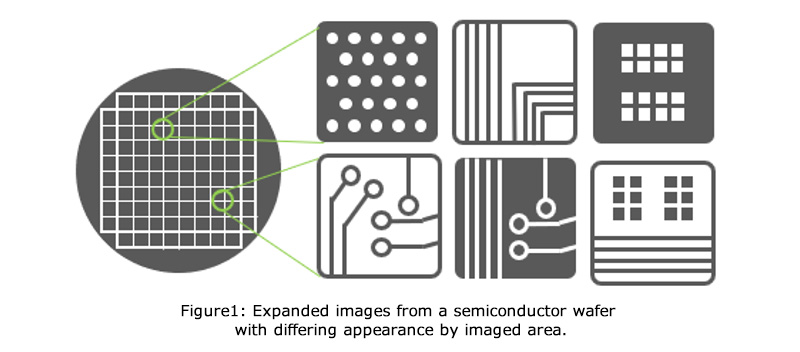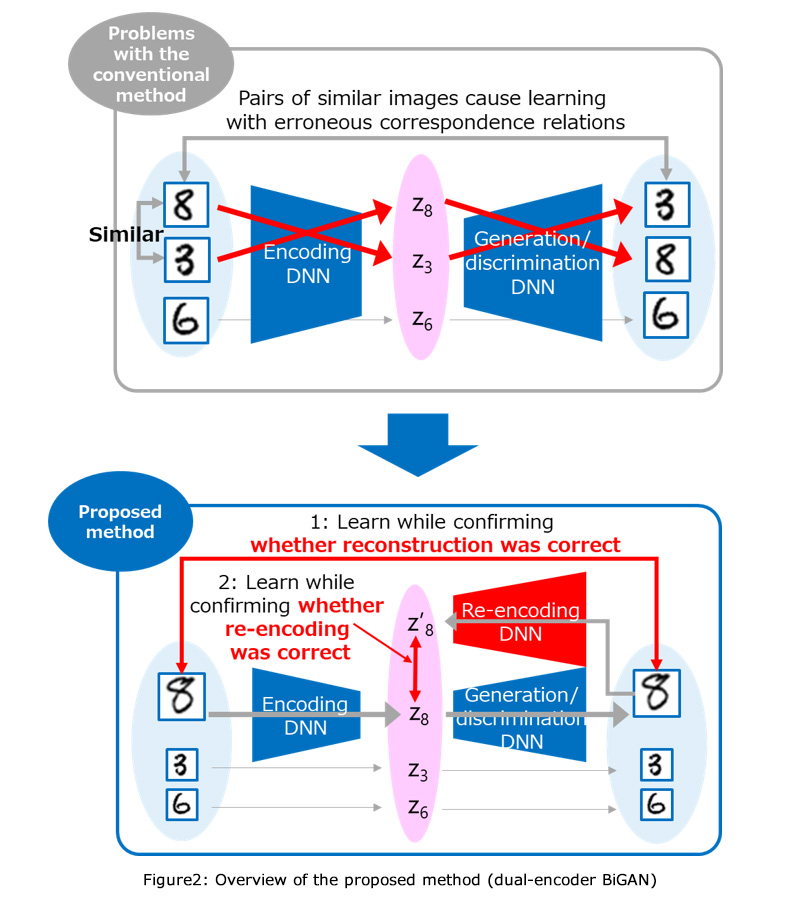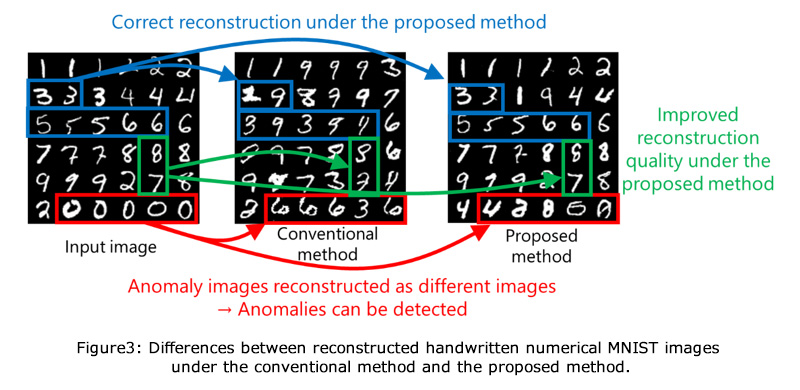Toshiba Develops AI Technology for World-Class Accuracy in Image-Based Anomaly Detection
-Achieving high accuracy even when the appearance of the inspection target differs by imaged area or product type, and improving productivity at diverse manufacturing sites-
Toshiba Corporation
TOKYO―Toshiba Corporation (TOKYO: 6502) has improved detection accuracy(Note 1) for public data(Note 2) by almost 10% over conventional methods(Note 3) (from 69.5% to 79.1%), achieving world-best detection performance in AI for anomaly detection using images of products at manufacturing sites. The company’s proprietary deep-learning methods allow highly accurate learning from only normal data, eliminating the need for anomaly data that can be difficult to collect at manufacturing sites. Anomalies are detected with high accuracy even when the appearance of the inspection target differs by imaged location or product type (Fig. 1). This AI will help automate quality control inspection of semiconductor wafers, which is conventionally performed visually, and will contribute to improved productivity at manufacturing sites.
Toshiba presents details of these technologies at the 19th IEEE International Conference on Machine Learning and Applications, to be held online from 14–17 December 2020.

Recent years have seen various initiatives related to productivity at manufacturing sites, such as the use of AI to improve product yields. The market for AI products in the manufacturing sector is predicted to increase from approximately US$1.1 billion in 2020 to $16.7 billion by 2026, a fifteen-fold increase(Note 4).
When using images of products to detect anomalies at manufacturing sites, the low occurrence of product anomalies makes it difficult to collect anomaly data, so there is need for learning techniques that utilize only normal data. One method that does not require anomaly data is to detect differences from standard normal data. This method is effective when imaging products with fixed angles and structures, such as nuts and bolts, but when the appearance of inspection targets is like that in Fig. 1, differing by imaged area or product type, it becomes impossible to prepare normal data to use as a basis of assessment, making application of this method infeasible. For example, when inspecting semiconductor wafers for defects, multiple wafer locations must be imaged and the presence of defects such as dust or scratches must be confirmed from image enlargements. Because the appearance of the images differs according to the imaged area and the product type, and also because dust and scratches appear in diverse forms, there are situations where it becomes impossible to determine the presence or absence of defects from the correctness of a single sample (the correct answer).
As a technology that uses deep learning to deal with such situations, another method applies AI to learn “normal data-likeness” from only normal data. This method digitizes (encodes) image data features as latent variables, which are then reconstructed into image data. When trained with only normal data, the AI cannot correctly reconstruct anomaly data, so differences in image data between the input and the reconstruction allow anomaly detection even when the situation differs according to the imaged area and product type. However, learning can sometimes create incorrect latent variables from similar images, making accurate reconstructions from normal data impossible and resulting in insufficient accuracy.
Toshiba therefore developed a deep-learning AI using the company’s proprietary dual-encoder BiGAN method in order to greatly improve the reconstruction performance from normal image data. This AI re-digitizes (re-encodes) image data reconstructed from a latent variable into a new latent variable and then performs learning under the constraint that the two latent variables match. In addition to increasing the rigor of conventional image data comparisons of inputs and their reconstructions, comparing latent variables allows image reconstructions with higher accuracy, even when the situation differs according to imaged area and product type, thus enabling successful detection of anomalies with high accuracy.
Using this AI to perform anomaly detection on an internationally used public dataset containing images of handwritten numerals, the conventional detection accuracy of 69.5% was improved to 79.1% (Fig. 3), achieving world-best detection performance. Furthermore, applying this method to in-house inspection images acquired at a semiconductor manufacturing plant improved detection performance from 50.5% to 91.6%. In the future, Toshiba will apply this method to various inspection processes and products and verify its performance.


In fiscal 2021, Toshiba plans to apply this AI to image inspection processes at a semiconductor manufacturing plant owned by Toshiba Electronic Devices & Storage Corporation. Realizing high-accuracy anomaly detection will increase the efficiency of detecting defective items, contributing to yield improvements. Based on the results obtained at Toshiba Group manufacturing sites, the company will promote the development of the “Meister Series” of solutions for the manufacturing industry from Toshiba Digital Solutions Corporation.
- (Note 1)
- In this evaluation, the AI performed detection using numerals 1–9 as normal data and the unlearned numeral 0 as anomaly data. The ratio of correctly detected anomalies over all anomaly data was calculated in 10 ways, including cases where each numeral from 1 to 9 was regarded as anomaly data, and the resulting average was taken as the accuracy of anomaly detection.
- (Note 2)
- MNIST: A representative dataset of handwritten numerals 0–9 used for AI performance verifications.
http://yann.lecun.com/exdb/mnist/ (Yann LeCun.) - (Note 3)
- BiGAN : Zenati et al. “Efficient GAN-based anomaly detection.” arXiv preprint arXiv:1802.06222 (2018).
- (Note 4)
- https://www.value-press.com/pressrelease/252857 (valuepress CO,LTD.)


